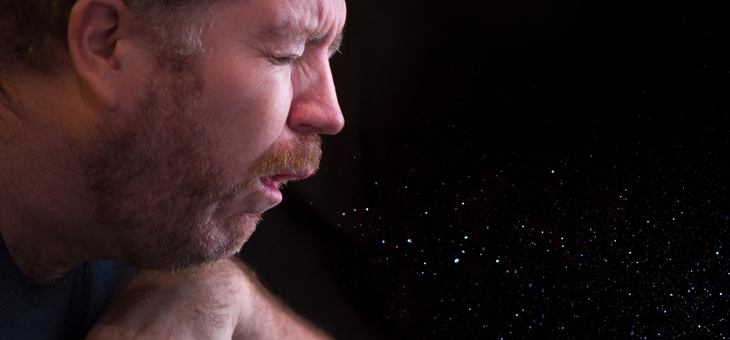More than 200 scientists worldwide have written an open letter to the World Health Organisation (WHO) saying coronavirus can be spread in the air.
The Los Angeles Times is reporting that the 232 experts from 32 countries believe “aerosols – microscopic versions of standard respiratory droplets – can hang in the air for long periods and float more than four metres, making poorly ventilated rooms, buses and other confined spaces dangerous, even when people stay 1.5 metres from one another”.
This is at odds with the WHO and the US Centres for Disease Control and Prevention, which contend you only catch the disease by inhaling respiratory droplets from an infected person in your immediate vicinity or by touching a contaminated surface and then your eyes, nose or mouth.
The open letter, soon to be published in a scientific journal, reportedly accuses the WHO of “failing to issue appropriate warnings about the risk” posed by aerosols.
WHO officials say that aerosol transmission occurs only during medical procedures such as intubation that can “spew large quantities of the microscopic particles”, according to the Los Angeles Times.
The New York Times holds that its research paints “a picture of an organisation that, despite good intentions, is out of step with science”.
“If airborne transmission is a significant factor in the pandemic, especially in crowded spaces with poor ventilation, the consequences for containment will be significant,” it says.
“Masks may be needed indoors, even in socially distant settings. Healthcare workers may need N95 masks that filter out even the smallest respiratory droplets as they care for coronavirus patients.
“Ventilation systems in schools, nursing homes, residences and businesses may need to minimise recirculating air and add powerful new filters. Ultraviolet lights may be needed to kill viral particles floating in tiny droplets indoors.”
Dr Benedetta Allegranzi, the WHO’s technical lead on infection control, says the evidence for the virus spreading by air is unconvincing.
“Especially in the last couple of months, we have been stating several times that we consider airborne transmission as possible but certainly not supported by solid or even clear evidence,” she said. “There is a strong debate on this.”
It was already known that some people, known as ‘super spreaders’, exhale 1000 times more fine material than others. And a study examining how a suspended virus mist in a laboratory concluded it remained infectious for three hours. Analysis of an outbreak among choir members in Washington furthered the aerosol theory.
“We believe it likely that shared air in the fellowship hall, combined with high emissions of respiratory aerosol from singing, were important contributing factors,” the resulting paper said.
Eventually, a coalition of researchers began to push for recognition of the danger of airborne coronavirus, saying it was “less contagious through the air than measles but that the risk of transmission goes up the longer air remains stagnant and the longer people continue to breathe it”.
Donald Milton, a University of Maryland environmental health professor who co-wrote the letter, said the average person breathes 10,000 litres of air each day.
“You only need one infectious dose of the coronavirus in 10,000 litres, and it can be very hard to find it and prove that it’s there, which is one of the problems we’ve had,” he said.
Experts who spoke to The New York Times were sympathetic about the political difficulties, growing workload and shrinking funding of the WHO, but found its infection prevention and control committee held a “rigid and overly medicalised view of scientific evidence, is “slow and risk-averse” and “allows a few conservative voices to shout down dissent”.
“They’ll die defending their view,” said one longstanding WHO consultant.
People generally “think and talk about airborne transmission profoundly stupidly,” said Bill Hanage, an epidemiologist at the Harvard T.H. Chan School of Public Health.
He insists the coronavirus is most infectious when people were in prolonged contact at close range, especially indoors, as scientists would expect from aerosol transmission.
Dr Paul Hunter, a member of the infection prevention committee and professor of medicine at the University of East Anglia in Britain, told The New York Times that proof of the aerosol theory was needed before hospitals in low and middle-income countries diverted scarce resources.
Dr Soumya Swaminathan, the WHO’s chief scientist, said the agency was trying to evaluate new scientific evidence as fast as possible, but without sacrificing the quality of their review.
“We take it seriously when journalists or scientists or anyone challenges us and says we can do better than this,” she said.
Are you wearing a mask in public?
If you enjoy our content, don’t keep it to yourself. Share our free eNews with your friends and encourage them to sign up.
Related articles:
https://www.yourlifechoices.com.au/health/covid19/rethink-easing-of-restrictions-gps
https://www.yourlifechoices.com.au/health/covid19/what-you-can-do-where-you-can-go
https://www.yourlifechoices.com.au/health/wellbeing/daily-habit-boosts-your-health

